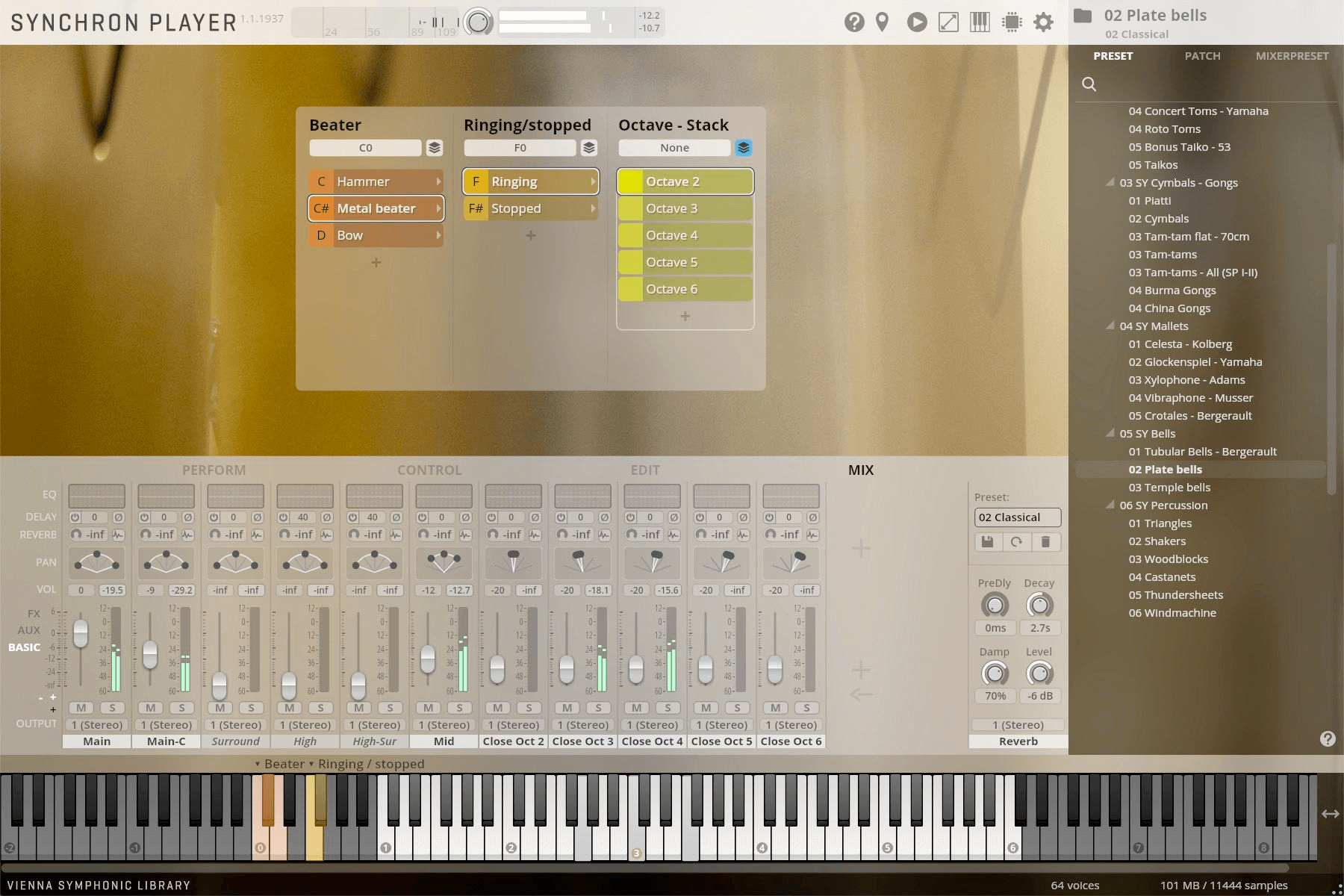Synchron Bells II, part of the Synchron Percussion II Collection, offers plate bells and temple bells. Plate bells, originating in ancient Asia, were brought into the modern orchestra by composers like Verdi and Berlioz in the 19th century. By the 20th century, they evolved into a chromatically - tuned set. In the orchestra, they can replace real bells. With a rich overtone spectrum, they add unique tonal color and accents. Unlike most orchestral plate bells, those in Synchron Percussion II cover an unusually wide four - octave range (C2–C7). Recorded with up to four dynamic layers and four round robins for single strokes, played with a bell hammer or metal mallet, they produce a very bright sound. There's also a bowed effect. Temple bells, which developed from traditional Far - Eastern kitchenware and are seen in Zen Buddhism, are now used for meditation and therapy. They have a round, warm, and calming sound. The temple bells in this collection were recorded with up to four dynamic layers and four round robins, using soft, hard, and triangle beaters, clappers for rubbing, and a bow.

How to use: For plate bells, you can use a bell hammer or a metal mallet to play single strokes. You can also try the bowed effect for a different sound. For temple bells, you can hit them with soft, hard, or triangle beaters, rub them with clappers, or bow them. Note that when handling these bells, be gentle to avoid damage. Maintenance: Keep the bells in a dry and clean place. Wipe them regularly with a soft cloth to keep them looking good and sounding great. Don't expose them to extreme temperatures or humidity as it may affect their sound quality.
